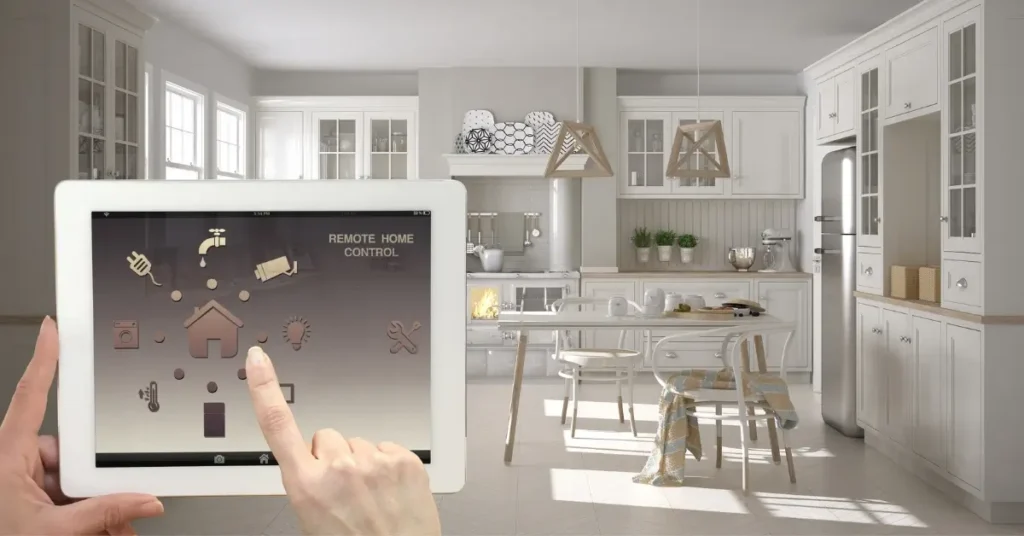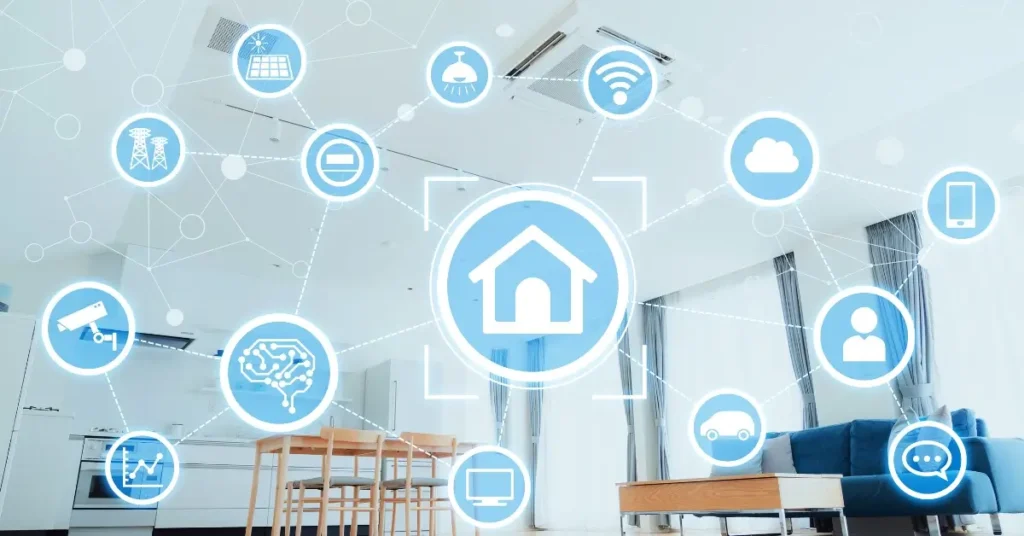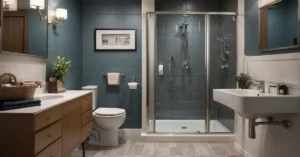As someone who loves technology, I understand how important it is to have a smart home that can make our lives easier. With so many smart home devices available on the market, it can be overwhelming to choose which ones to buy. However, before you even start thinking about which smart home devices to purchase, you need to decide which smart home wireless technology to use.
Smart home wireless technology refers to the way your smart home devices communicate with each other and with your smartphone or other control devices. There are several different smart home wireless technologies available, each with its own advantages and disadvantages. Some of the most popular smart home wireless technologies include Wi-Fi, Bluetooth, Z-Wave, and Zigbee.
In this article, I will explore the pros and cons of each smart home wireless technology to help you decide which one is right for you. Whether you’re just starting to build your smart home or you’re looking to upgrade your existing setup, understanding the differences between these technologies can help you make an informed decision. So, let’s dive in and explore which smart home wireless technology is right for you!
Best Home Automation Systems 2023
From budget-friendly devices to high-end apps and ecosystems like Google, Samsung, and Apple, there are many options available to create a smart, efficient, and personalized living space. In this article, I’ll be diving into each of these systems and highlighting their unique features and benefits. So, whether you’re looking for a voice-activated system, an app-based solution, or a universal automation system, I’ve got you covered.
RM4 Pro
If you’re looking to set up a smart home within a budget, the RM4 Pro is the perfect solution for all your automation needs. This highly compatible system supports RF control of smart devices such as TVs, set-top boxes, air conditioners, fans, lights, doors, and more. With the new Broadlink app, setup is a breeze, providing an improved user experience. The RM4 Pro also supports Alexa and Google Home voice control compatibility, giving you the power and automation through your voice. Additionally, you can connect an external temperature and humidity sensor to the RM4 Pro, allowing you to monitor the conditions of your home with zero configuration. Adding new devices to your setup is easy. Transform your living space into a smart home within your budget with the RM4 Pro system and take control of your devices with ease.
Home Assistant
If you’re looking to use an app on your phone instead of an extra hub for automation, consider this open-source Home Assistant automation system. It’s a top-rated solution for those looking to integrate all their smart devices into one app. With over a thousand compatible brands, setting up your devices is easy, and Home Assistant takes care of the rest. The pre-installed advanced automation engine can help you manage your home precisely, allowing you to automate your lights, turn off your devices when you’re away, and receive garage door alerts as well. Home Assistant makes all of this possible for you. In addition, you can extend your system with add-ons like Ad Guard, Node-Red, and even Spotify. With privacy and security protocols you can trust, the system will keep your data protected. Upgrade your home with the Home Assistant automation system today and experience the convenience and control of a one app solution on a whole new level.
Echo Show 10
When your primary desire is a voice-activated home automation system, you just cannot go wrong with the Echo Show 10 from Amazon. For complete home assistance, Alexa can control your smart home devices, answer questions, make phone calls, and perform other functions via voice commands. The device is designed with multiple layers of security to prioritize your privacy. With its 10.1-inch 1080p screen, you can enjoy video calls, recipes, and your favorite shows with decent clarity. You’ll have everything at your fingertips, all thanks to its access to Prime Video, Netflix, Amazon Music, Spotify, and other entertaining platforms. The Echo Show 10 is perfect for displaying your favorite photos with adaptive color as well. Additionally, the built-in camera lets you remote and monitor your home while being on the go. Use your voice to control your home with the Echo Show 10 and enjoy the convenience it brings to your life.
Android Home Automation: SmartThings Hub
Let’s say you’re a Samsung user and you want to set up your home with the ultimate Android home automation system. Meet the SmartThings Hub. It’s designed to be an all-in-one Android and other operating systems compatible device that can simplify and enhance your daily life. The intuitive setup process also lets you customize your smart home with ease. Plus, the Smart Button puts personalized controls at your fingertips, letting you optimize day and night routines easily. This SmartThings Hub is packed with convenience and performance features, including a USB-C port and a reset button to ensure it works quickly and correctly. On top of that, its super-fast wireless charging ensures your phone is always charged up and ready to go. Simply put, this is one of the best automation systems for Samsung as well as other Android users.
Google Home Automation: Nest Hub (2nd Generation)
Moving on to the next automation system, we have the Nest Hub second generation from Google. This device is compatible with both Android and iOS, making it a valuable addition to any home automation system. Whether you want to play music, watch videos, control your home lighting, or manage your daily schedule, the Nest Hub is the perfect device for hands-free help at home. Plus, with three far-field microphones, your voice commands will be heard clearly from anywhere in the room. For seamless interaction, its 7-inch touchscreen display provides a clear and immersive viewing experience. The device is powered by a quad-core CPU and comes with 8 gigabytes of storage, providing smooth performance and decent storage capacity for your favorite media. It also offers seamless connectivity, supporting Dual Band Wi-Fi, Bluetooth 5, Chromecast, and more. With an ambient EQ light sensor and a capacitive touch sensor, using and
App-Based Automation: Home Assistant
If you are looking for an app-based home automation system, then the Open Source Home Assistant Automation System is definitely worth considering. This top-rated solution is perfect for those looking to integrate all their smart devices into one app. With over a thousand compatible brands, setting up your devices is easy. The pre-installed advanced automation engine can help you manage your home precisely, allowing you to automate your lights, turn off your devices when you’re away, and receive garage door alerts as well. Home Assistant takes care of the rest.
In addition, you can extend your system with add-ons like Ad Guard, Node-Red, and even Spotify. With privacy and security protocols, you can trust the system to keep your data protected. Upgrade your home with the Home Assistant Automation System today and experience the convenience and control of a one-app solution on a whole new level.
Apple Home Automation: Apple Home App
When it comes to automating your home under Apple’s ecosystem, the ultimate solution is the Apple Home app. With this app, I can connect and control all my smart devices from Apple, such as lights, thermostats, locks, and cameras, all under a single control.
One of the best features of the Apple Home app is its pre-installed Siri voice command, which allows me to control my devices hands-free and conveniently. Additionally, the app’s security and privacy features ensure that my personal data is always secure.
With remote access, I can control my smart home devices from anywhere when I’m away, giving me peace of mind. Whether you’re an experienced home automation expert or just getting started, the Apple Home app is the perfect solution for creating a smart home under Apple’s ecosystem.
Universal Home Automation: Matter Smart Home Solution
If you’re looking for a home automation system that works across multiple ecosystems, the Matter Smart Home Solution is a great option. It’s designed to improve compatibility between different smartphone devices and platforms, making it easier for you to control your smart home devices.
Matter uses a wireless communication protocol called thread to provide fast and reliable connectivity while maintaining security. With Matter, controlling smart home devices is effortless and can be done through voice commands via popular voice assistants like Amazon Alexa, Google Assistant, and Siri.
Users can also access a user-friendly interface through a mobile app, web portal, or physical controller. Moreover, Matter supports advanced automation features such as scheduling rules and scenes.
With Matter, you can say goodbye to the frustration of incompatible smart home devices and embrace a more convenient and seamless smart home solution.
Choosing the Right Wireless Technology for Your Smart Home

With so many wireless technologies available in the market, it can be overwhelming to determine which one is the best for your smart home. In this section, I will guide you through the most popular wireless technologies and help you decide which one suits your needs the most.
Wi-Fi
Wi-Fi is the most common wireless technology used in smart homes. It is easy to set up, and most smart devices are compatible with it. With Wi-Fi, you can control your smart devices from anywhere in the world through your smartphone. However, Wi-Fi can be unreliable if you have a weak signal or too many devices connected to it at once.
Bluetooth
Bluetooth is another popular wireless technology used in smart homes. It is ideal for smart devices that are in close proximity to each other, such as smart speakers and light bulbs. Bluetooth is easy to set up and does not require an internet connection. However, it has a limited range, and you cannot control your devices from outside your home.
Zigbee
Zigbee is a wireless technology designed specifically for smart homes. It uses low-power radio waves to connect devices and has a longer range than Bluetooth. Zigbee is ideal for smart devices that require low power, such as sensors and smart locks. However, Zigbee requires a hub to connect devices, which can be an additional expense.
Z-Wave
Z-Wave is another wireless technology designed for smart homes. It uses low-power radio waves to connect devices and has a longer range than Zigbee. Z-Wave is ideal for devices that require low power, such as smart locks and sensors. However, like Zigbee, Z-Wave requires a hub to connect devices.
In conclusion, choosing the right wireless technology for your smart home depends on your specific needs and preferences. Wi-Fi is ideal for devices that require a strong internet connection, while Bluetooth is ideal for devices that are in close proximity to each other. Zigbee and Z-Wave are ideal for devices that require low power. Choose the wireless technology that suits your needs and budget the most.
Security in Smart Home Wireless Technology

Firstly, it is essential to choose a wireless technology that uses encryption to protect your network and devices. For instance, Wi-Fi Protected Access (WPA) and WPA2 are two encryption protocols that are commonly used in smart home devices. These protocols ensure that your network is secure and that your data is protected from hackers.
Another important security feature to consider is two-factor authentication. This feature adds an extra layer of security to your smart home devices by requiring you to enter a code or use a biometric identifier, such as a fingerprint or facial recognition, in addition to your password. This makes it more difficult for hackers to gain access to your devices.
In addition to encryption and two-factor authentication, it is also important to keep your devices up to date with the latest firmware updates. These updates often include security patches that fix vulnerabilities in the software. Therefore, it is crucial to regularly check for updates and install them promptly.
Lastly, it is important to use strong and unique passwords for your smart home devices. Avoid using common passwords or reusing passwords across multiple devices. Instead, use a password manager to generate and store complex passwords for each device.
Future of Smart Home Wireless Technology
Currently, Wi-Fi 6 is the most advanced wireless technology available for smart homes. It offers faster speeds, lower latency, and better coverage than its predecessor, Wi-Fi 5. Wi-Fi 6 uses advanced technologies such as MU-MIMO, OFDMA, and 1024-QAM to deliver faster and more efficient wireless connections. It is also backward compatible with Wi-Fi 5 devices, so you can still use your older devices with the new router.
Another promising wireless technology for smart homes is 5G. While 5G is primarily associated with mobile networks, it can also be used for home internet connections. 5G offers faster speeds and lower latency than Wi-Fi, making it ideal for applications such as gaming and video streaming. However, 5G is still in its early stages, and it may take some time before it becomes widely available for home internet connections.
Apart from Wi-Fi 6 and 5G, there are other wireless technologies that are being developed for smart homes. For example, Zigbee and Z-Wave are low-power wireless technologies that are specifically designed for smart home devices. They offer longer battery life and better range than Wi-Fi, making them ideal for devices such as smart locks and sensors.
FAQ
What is the most secure standard for wireless?
As of August 2023, the WPA3 standard is considered the most secure for wireless network.
What is a limitation of smart home technology?
A limitation of smart home technology is its high cost, which can be a concern for most homeowners.
Do smart homes use artificial intelligence?
Yes, smart homes use artificial intelligence to automate and control various devices and systems. AI can help reduce energy costs, improve safety and security, and enhance convenience.
If you liked this blog article about the topic: Which Smart Home Wireless Technology, don’t forget to leave us a comment down below to tell us about your experience.
Feel free to also check out our Articles from the category “All about Smarthome“.



